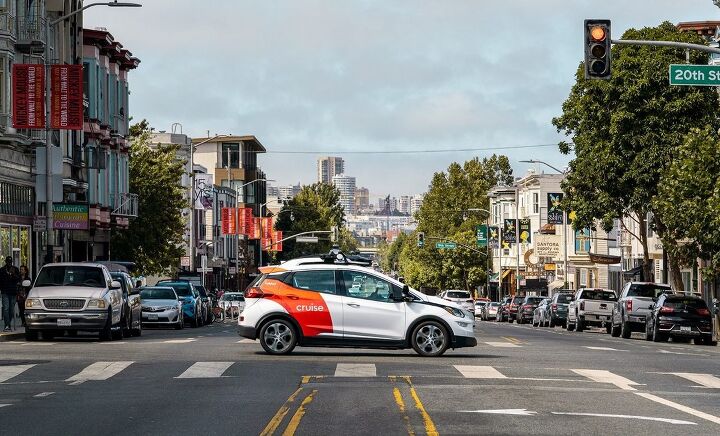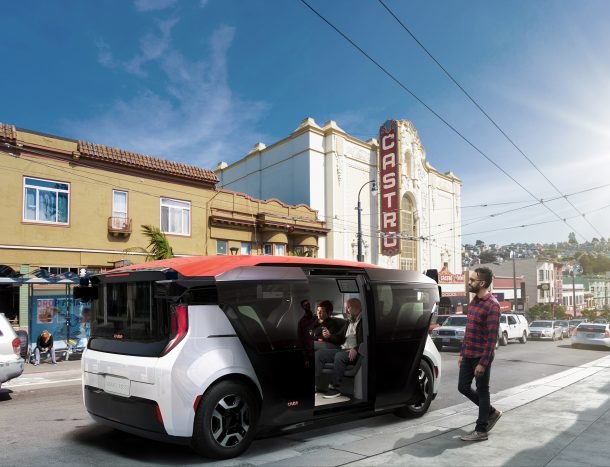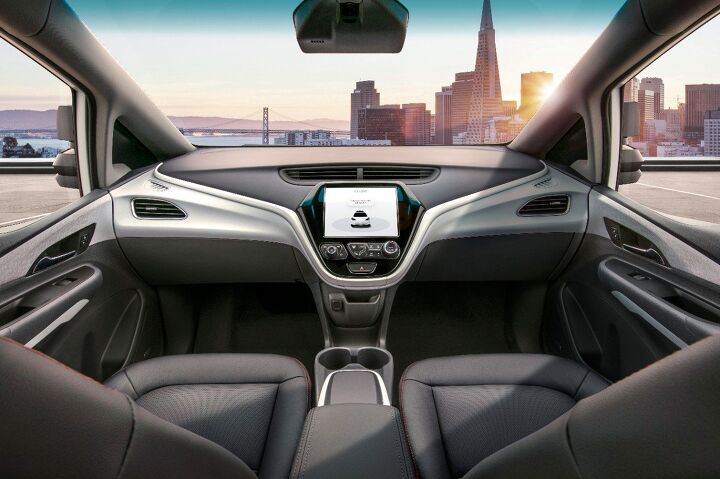#AutonomousVehicles
IIHS Denounces Concept of Total Safety From Autonomous Cars
When the United States began passing legislation allowing automakers to begin testing self-driving vehicles on public roads, it was framed almost entirely as a safety issue. Proponents claimed that the only way to eliminate roadway fatalities was to take the human brain out of the equation and let cars drive themselves. Having enacted a similar no-thinking policy themselves, legislators agreed — pleased to have ensured a death-free future on little more than empty corporate promises.
At the time, we were still complaining about the unreliable nature of advanced driving aids, and how such systems seem custom-made to dull your reflexes behind the wheel. There was a sense that, if everything went perfectly, maybe autonomous vehicles (AVs) could reduce accidents by previously unheard of levels. That feeling didn’t last particularly long here at TTAC and, by 2018, we started noticing we weren’t alone.
The Insurance Institute for Highway Safety (IIHS) grew increasingly critical of AVs starting a couple of years ago. On Thursday, it released a report claiming the idea of a no-crash future spurred by automation is a fantasy. Instead, the IIHS says cutting-edge technology will likely struggle to stop just a third of all accidents.
The Great Self-driving Revolution Gets a Language Check
Words have the power to inform or mislead. The descriptors “military grade” or “assault-style” did great things for public acceptance of a recent Canadian gun ban, prompting legions of voters to believe the government just banned once-legal, high-capacity machine guns. The reality was far different, of course.
In the automotive world, critics of the haphazard roll-out of certain advanced driving aids have long railed against the use of words like “autonomous,” “semi-autonomous,” and “self-driving” when referring to systems that most certainly are not fully autonomous. It seems the Associated Press agrees with their arguments.
It’s a win for clarity.
GM Lays Off Cruise Employees
Cruise, the self-driving arm of General Motors, is cutting roughly 8 percent its full-time staff as coronavirus lockdowns mar the economy and companies walk back development programs. You might have noticed the hype surrounding autonomous cars started dying down even before 2020 became the most miserable year in recent memory.
That made them prime candidates for cost-saving cuts. Health concerns have likewise made autonomous concepts like “robotaxis,” where occupants are confined together in small, self-driving shuttles, far less appetizing. Cruise actually showed off a six-passenger AV it developed and built back in January. Interested in paying to ride face to face with complete strangers?
We didn’t think so.
Hunt Ends: American Center for Mobility Names New CEO
Following a nearly six-month search for new leadership, the American Center for Mobility (ACM) has named Reuben Sarkar as its new CEO. The Michigan-based facility has been without a chief executive since Michael Noblett left in November of 2019, leaving COO Mark Chaput in charge while the company hunted for a replacement.
It found one with Sarkar. He’s positioned to assume his new role at the historic site (Willow Run) that manufactured B-24 bombers in World War II before transitioning to GM vehicles and eventually the testing of autonomous cars, in early May. But this isn’t one of those cushy CEO positions where one can sit back and enjoy a sizable annual bonus. Intellectual property conflicts, legal hazards, and a longer-than-presumed development timelines have stagnated the self-driving industry. Mr. Sarkar is going to have his work cut out for him — though we’re sure he’ll still be well paid.
California Greenlights Autonomous Delivery Vehicles for Public Roads
On Tuesday, self-driving startup Nuro received a permit from the State of California to commence testing on certain public roads. Issued by the state’s Department of Motor Vehicles, the document allows its fleet of driverless delivery bots to mingle with traffic.
On a national level, Nuro’s vehicles are technically illegal without a smidgen of government help. U.S. Federal Motor Vehicle Safety Standards mandate road-going automobiles have things like windshields, airbags, and mirrors. Meanwhile, Nuro’s small delivery units don’t even have space for a driver — requiring the Department of Transportation to make regulatory exemptions for the brand in February after debating the issue for over a year.
Annoy the Driver: IIHS Offers Its Two Cents on Improving Self-Driving Safety
The Insurance Institute for Highway Safety (IIHS) has issued a set of guidelines for advanced driving aids, suggesting that the key to automated safety is making sure drivers are perpetually engaged with the vehicle’s operations. Unfortunately, this has turned out to be a Catch-22 scenario due to the way these systems function. Semi-autonomous features are supposed to be there to help promote safety by adding an extra layer of protection; however, many encourage motorists to disengage by nature of their design.
Adaptive cruise control with lane keeping is probably the worst offender. Implemented as a way to keep cars a safe distance apart on the expressway, it offers an experience that borders on having the car chauffeur you around. The effectiveness of these systems vary widely, with none actually being capable of any legitimate self-driving functionality. You’re also not supposed to be able to tune out while they’re in use, but they all seem coyly contrived to do exactly that. The IIHS is concerned this phenomenon will only get worse as driving aids evolve and become increasingly commonplace.
“Unfortunately, the more sophisticated and reliable automation becomes, the more difficult it is for drivers to stay focused on what the vehicle is doing,” said IIHS President David Harkey. “That’s why systems should be designed to keep drivers actively engaged.”
Could Coronavirus Complications Make AVs More Popular?
As the coronavirus epidemic scares populations out of stores, transportation hubs, and stock markets, autonomous vehicles may be getting a leg up in China. Bloomberg reports that Neolix, an autonomous delivery company based in Beijing, has seen a surge in demand as people opt to stay home (or are forced into quarantined by the Chinese government). Founder Yu Enyuan said the startup has booked orders for more than than 200 autonomous delivery pods since knowledge of COVID-19 became public — noting it had only produced 125 units in the eight months leading up to that.
Thanks to being overhyped by an industry that wasn’t anywhere near as far along as claimed, autonomous vehicles haven’t earned a lot of love lately. Yet Neolix’s minor victory suggests they may have useful applications that previously went ignored. In the realm of humanoid robotics, the goal if often to design a platform that can successfully fill in for a living, breathing person when the surrounding environment becomes too dangerous. Why not for AVs?
Seeing Ghosts: Self-driving Cars Aren't Immune From Hackers
Autonomous vehicles “feel” the road ahead with a variety of sensors, with data received sent through the vehicle’s brain to stimulate a response. Brake action, for example. It’s technology that’s far from perfected, yet self-driving trials continue on America’s streets, growing in number as companies chase that elusive driver-free buck.
In one tragic case, a tech company (that’s since had a come-to-Jesus moment regarding public safety) decided to dumb down its fleet’s responsiveness to cut down on “false positives” — perceived obstacles that would send the vehicle screeching to a stop, despite the obstacle only being a windblown plastic bag — with fatal implications. On the other side of the coin, Tesla drivers continue to plow into the backs and sides of large trucks that their Level 2 self-driving technology failed to register.
Because all things can be hacked, researchers now say there’s a way to trick autonomous vehicles into seeing what’s not there.
Former Uber Self-driving Head Declares Bankruptcy
The former leader of Uber Technologies’ self-driving unit, Anthony Levandowski, filed for Chapter 11 bankruptcy on Wednesday, and it looks to have something to do with the $179 million he’s legally obliged to pay Google. A San Francisco County court decreed the same day that Anthony needs to pay out in order to settle his contract dispute.
In December, it was ruled that Levandowski and Lior Ron violated their agreement with Google when they left the company to start Otto — a rival autonomous vehicle company focused primarily on commercial trucking. Uber purchased Otto in 2017 but Google’s self-driving arm (which evolved into Waymo) claimed Levandowski violated intellectual property laws by stealing trade secrets it owned for Uber. While Ron decided to pay $9.7 million to settle with the tech firm, Anthony held out. He also faces a federal indictment over the alleged intellectual property violation.
Waymo Raises $2.25 Billion in External Funding Push
Waymo CEO John Krafcik announced Monday that his company amassed $2.25 billion in its external investment round. Considering Waymo is owned by Google parent Alphabet, one of the richest companies in the world, you’d think it’d be able to float some extra funding into autonomous development. However, even a company worth an estimated $1 trillion knows it’s better to source capital from outside the business — that must be on the first page of every tech company’s playbook.
Seen widely as the firm currently riding the tip of the autonomous spear, Waymo already operates self-driving shuttle programs (with a safety driver) in Arizona, with plans for expansion. The new funding aims to further those goals; however, with autonomous targets being missed by just about every company that bothered making them, we’ll wait to see what happens. The company is currently focused on getting its Waymo Driver system into more vehicles, starting with EVs and Class 8 trucks.
Ohio Self-driving Shuttle Service Stalled After Minor Incident
You may recall the autonomous Linen LEAP shuttle service that launched in Columbus, OH earlier this month. Well, the city placed the program on pause last week because someone fell during an abrupt stop. Smart Columbus, the group responsible for the service, has taken both EasyMile EZ10s off their route for assessment by the manufacturer.
Additional details kept us hip to how the program has done so far. According to local outlet WCMH-TV, the twin shuttles have moved 50 people around the Linden area since launching on February 5th. That averages out to a little more than three riders per day, which we don’t have to tell you isn’t great value for the money when the entire project costs millions. But that was never Smart Columbus’ plan. The intended goal was to connect a subset of carless residents in one neighborhood with essential services and other parts of the city.
That aspect of the scheme hasn’t gone seamlessly, either.
Something to Agree On: Everyone Wants More Autonomous Vehicle Legislation
While the United States has enacted some laws governing autonomous vehicles, the framework is pretty loose. Automakers have a cap on the number of test vehicles they’re allowed to field. They also have to get permission from the National Highway Traffic Safety Administration, but safety reporting is basically voluntary — and there’s plenty of conflict with existing safety standards.
A House Energy and Commerce subcommittee hearing held Tuesday sought to address the issue by gathering input from an array of sources, some of which had conflicting goals. And yet it appears that a consensus has miraculously been reached on Capitol Hill. All sides want more laws passed governing autonomous vehicles, albeit for various reasons. Consumer groups want assurances that AVs will remain safe and service as many people as possible; industry groups want a clearcut regulatory framework they can use to gradually shift test mules into products with more intellectual property protection and less red tape.
Autonomous Mass Transit Arrives in Ohio
Hoping to reconnect the South Linden neighborhood with the rest of Ohio’s capitol, the city of Columbus has launched an electric shuttle program funded primarily by the federal government. The municipality frames it as the first daily, public residential autonomous shuttle to be operated by an American city. While other U.S. towns exist that would definitely disagree with the claim, Columbus may be the first to run a self-driving shuttle seven days a week on the government’s dime.
Service began Wednesday, with the three-mile route open to all residents free of charge.
As the sole recipient of a $40 million USDOT grant tied to the Obama administration’s Smart City Challenge, Columbus opted to use EasyMile EZ10s for the project. They’re about what you’d expect — generic electric boxes with a small footprint and loads of headroom. The city received another $10 million from the Paul G. Allen Family Foundation, which acted for seed money for Smart Columbus’ Linden LEAP shuttle program.
One-box Bliss? Cruise Origin Is GM's First Ground-up Driverless Vehicle
Did General Motors’ self-driving arm reveal the future on Tuesday night? The automaker and its Cruise LLC subsidiary sure hope so, as both see big, big dollars coming from future autonomous ridesharing fleets.
The Cruise Origin unveiled in San Francisco last night is supposedly the vehicle (don’t call it a car) that will make that revenue stream possible. It certainly doesn’t look like a car, and the difference grows even greater when those side doors part.
'Not a Car': GM's Cruise to Show Off…Something
Cruise LLC, General Motors’ self-driving arm, plans to reveal a revolutionary vehicle in San Francisco on Tuesday, Bloomberg has learned. It will not be a modified Chevrolet Bolt that’s missing its steering wheel.
The expected reveal comes after a multiple rounds of funding and promises of near-future production and a planned ridesharing fleet.





























Recent Comments